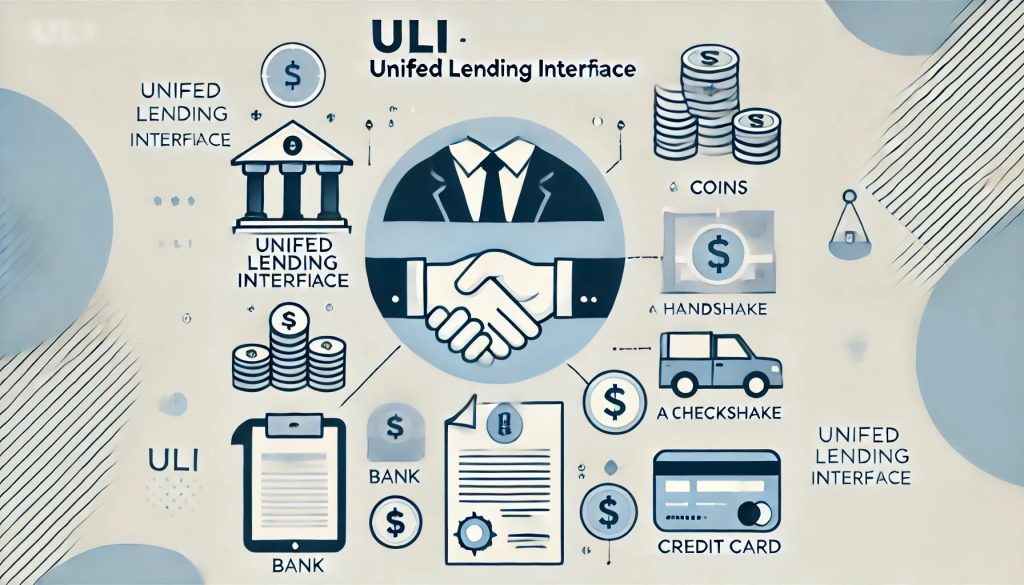Detailed Analysis and Findings on Unified Lending Interface (ULI)

Video Summary Generated by AI
Introduction to ULI:
The Reserve Bank of India (RBI) has introduced the Unified Lending Interface (ULI) following the success of the Unified Payments Interface (UPI). ULI aims to transform the lending landscape in India by providing a seamless, digital platform that bridges the gap between borrowers and lenders, particularly for underserved segments such as small and rural borrowers. Unified Lending Interface is poised to revolutionize how credit is accessed and disbursed, leveraging digitized financial and non-financial data from various sources to make the lending process more efficient, transparent, and inclusive.
Key Features of ULI:
1. Seamless Data Flow:
- ULI facilitates the flow of customers’ digitized data, including financial and non-financial information, from multiple data service providers to lenders.
- The platform integrates data from various sources such as government databases (e.g., GSTN, land records), satellite imagery, and financial records, making it accessible through standardized APIs.
2. Enhanced Credit Underwriting:
- Lenders can access granular customer data that allows for more accurate credit assessments.
- The platform provides tools for validation and verification, including PAN verification, document verification through DigiLocker, and eKYC.
3. Inclusive Financial Products:
- Unified Lending Interface aims to make borrowing simpler and more accessible for a diverse range of borrowers, particularly those in rural areas and small businesses (MSMEs).
- Customers benefit from personalized financial products tailored to their specific needs.
4. Digital Execution and Disbursement:
- The entire lending process, from credit assessment to agreement execution and disbursement, can be conducted digitally.
- ULI supports digital KYC, eSign, and eStamp, ensuring that the process is not only efficient but also secure.
5. Access to a Wider Lender Network:
- Fintechs and other financial service providers can connect with multiple lenders through ULI, unlocking new business opportunities and facilitating better customer insights.
Benefits for Different Stakeholders:
Customers:
- Access to a wide range of credit products tailored to their needs.
- Reduced friction in the lending process, making it faster and more transparent.
- Increased financial inclusion, particularly for rural and underserved segments.
Lenders:
- Streamlined access to comprehensive customer data, enabling more precise credit decisions.
- Lower customer acquisition costs due to the broad reach of the platform.
- Enhanced ability to validate and verify customer information, reducing fraud risks.
Fintechs:
- Opportunity to innovate and create new solutions by leveraging Unified Lending Interface standardized data and APIs.
- Ability to provide deeper customer insights and improve customer experiences.
Expert Insights and Industry Perspectives: (what people are talking about it)
- The platform is expected to make credit underwriting seamless and reduce friction in customer journeys.
- Lenders and fintechs are particularly poised to benefit from the standardized data and API access, enabling them to serve customers more effectively.
- Draws comparisons between ULI and existing digital lending platforms like Paisa Bazaar but with far more granular customer data and no spam.
- There are several uncertainties, such as the feasibility of digital hypothecation of property, the role of video KYC, and the participation of NBFCs.
- Despite these concerns, the platform is expected to lower customer acquisition costs and provide lenders with comprehensive tools for data access, validation, and execution.
- ULI is seen as a potential disruptor, much like how ChatGPT was perceived in the content creation space.
- However, rather than being a threat, Unified Lending Interface is expected to enable fintechs and other players to innovate further.
- The platform is anticipated to evolve from a pilot stage to a full-fledged product with significant implications for the lending ecosystem.
Strategic Implications for Large Lending Companies:
1. Streamlining Customer Onboarding:
- ULI’s integration of diverse data sources will allow large lending companies to streamline customer onboarding by automating data collection and validation processes.
- The platform’s standardized APIs will enable seamless integration with existing loan origination systems (LOS), reducing manual intervention and errors.
2. Enhanced Risk Management:
- By providing access to comprehensive and verified customer data, ULI will help large lenders improve their risk management capabilities.
- The ability to validate customer information in real-time reduces the risk of fraud and ensures that lending decisions are based on accurate and up-to-date information.
3. Cost Efficiency:
- The reduction in customer acquisition costs through the Unified Lending Interface will allow large lending companies to allocate resources more effectively.
- The platform’s digital tools for KYC, agreement execution, and disbursement will further reduce operational costs and improve turnaround times.
4. Increased Lending Opportunities:
- ULI will enable large lenders to tap into new markets, particularly in rural and underserved areas, by providing access to credit for segments that were previously difficult to assess.
- The platform’s inclusive approach aligns with government initiatives to promote financial inclusion and could result in increased lending volumes.
5. Competitive Advantage:
- Early adoption of the Unified Lending Interface will provide large lenders with a competitive advantage in terms of access to new customer segments and the ability to offer more personalized lending products.
- By leveraging the platform’s data and validation tools, large lenders can differentiate themselves in the market by offering faster, more secure, and customer-centric lending solutions.
Conclusion:
The Unified Lending Interface (ULI) represents a significant advancement in the Indian lending landscape, potentially reshaping how credit is accessed and disbursed. For large lending companies, ULI offers an opportunity to streamline customer onboarding, enhance risk management, reduce costs, and tap into new markets. By embracing ULI, these companies can position themselves as leaders in the evolving digital lending ecosystem, driving greater financial inclusion and innovation.
“Unlock the full potential of ULI with our detailed analysis—get insights and a free CRM system demo to elevate your lending strategy!”
